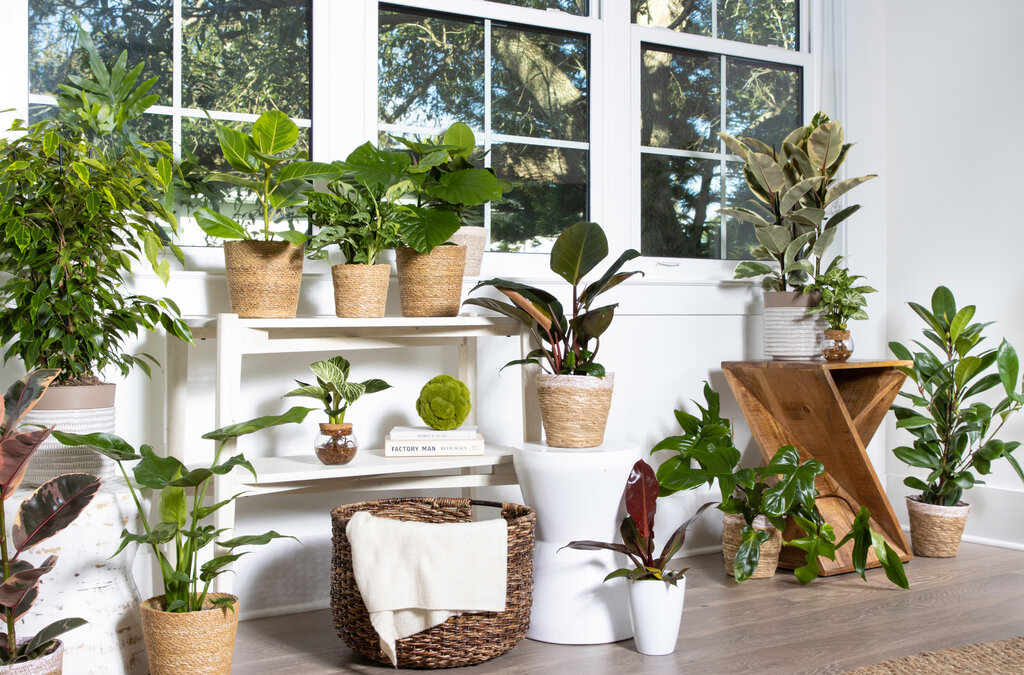blog, Garden Blog, Garden Tips
Making the Switch: How to Transition Your Outdoor Houseplants Indoors
Hey there, friends of Redwood Nursery!
After enjoying a sunny and vibrant summer outside, your houseplants will need to find their way back indoors as the season changes. This transition can seem tricky, but fear not! We’re here with a step-by-step guide to ensure your plants transition smoothly from your backyard to your living room.
Step one is all about performing a detailed inspection of your plants. Look closely for any signs of disease or pests that might have taken a liking to your green friends while they were outside. If you spot any signs of such unwelcome guests on your plants’ leaves, stems, or even under the pots, you’ll want to deal with those before you bring them indoors and risk infecting your other houseplants.
After inspection comes the cleanup. Dust off the leaves and rinse your plants gently with a hose to get rid of any stubborn bugs. If pests persist, an application of a mild, organic insecticidal soap should do the trick.
It’s also a good idea to consider repotting your plants before bringing them inside. Your plants might have outgrown their pots over the summer, or their soil might need a nutrient boost. Fresh soil and a slightly larger pot will set your plants up for indoor success.
Now that we’ve covered the basics let’s talk about some tropical favorites that transition well to the indoors, and where to position them in your home for optimal growth.
- Crotons: These stunning plants, famous for their vibrant, colorful foliage, add a touch of the tropics to any interior. They do best in bright, indirect light. Positioning them near an east or west-facing window usually works well.
- Palms: With varieties such as Areca Palms, Parlor Palms, and Kentia Palms, these plants bring a touch of the beach right into your home. They prefer bright, indirect light, so a north or west-facing window should serve them well.
- Boston Ferns: These ferns, with their lush, feather-like fronds, are a beautiful addition to your indoor space. They prefer cool spots with high humidity and indirect light. Therefore, bathrooms are often a good choice for these plants.
- Bougainvillea: These climbing beauties can be a bit challenging to keep indoors due to their need for at least 5 hours of direct sunlight every day. So, a sunny spot near a south-facing window is a must. You might also need to provide a support structure for them to climb.
- Hibiscus: This tropical beauty thrives in bright, indirect light. Position it near a south-facing window for optimum growth. Hibiscus prefers moist but well-draining soil, so be sure not to overwater.
- Mandevilla: Known for its stunning, trumpet-shaped flowers, Mandevilla also needs plenty of sunlight to bloom indoors. A well-lit spot near a south or west-facing window should do the trick. Keep in mind; these plants are climbers, so a trellis or support will be needed.
When making the transition from outside to inside, remember to be gentle. Moving plants indoors gradually over a week or two, starting with nights when temperatures drop, can help ease the stress of the change.
Finally, keep an eye on watering and feeding. While it’s essential to continue giving your plants adequate water and nutrients, indoor conditions usually lead to slower growth and less water consumption, so overdoing it can do more harm than good.
With these tips and a bit of TLC, you can create an indoor tropical haven with your plants. Enjoy a touch of summer even when the temperatures drop outside!
Until our next green-thumb adventure,
The Redwood Nursery Team.



